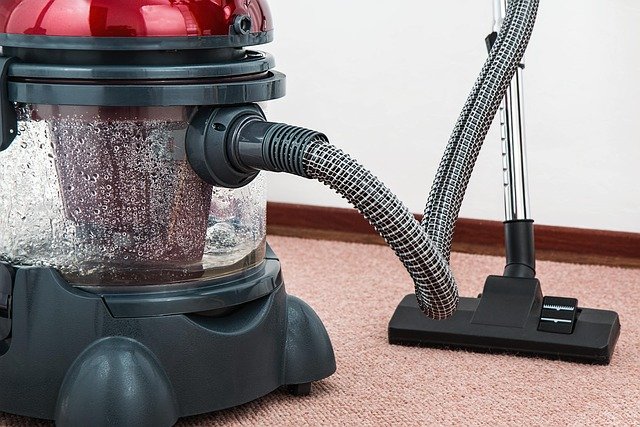What Families Wish They Knew Before Choosing A Senior Living Facility
Recent studies show that over 2 million Americans live in senior housing communities, yet many families feel unprepared when making this important decision. From understanding different levels of care to evaluating costs and amenities, there are crucial factors that can make the difference between a good choice and the perfect fit. Industry experts share insights on what to look for, red flags to avoid, and questions that reveal the true quality of a community.

What Types of Senior Living Communities Are Available Today?
The senior living landscape has evolved significantly, offering diverse options to meet varying needs and preferences. Independent living communities cater to active seniors who want maintenance-free living while retaining their autonomy. These facilities typically feature apartment-style living with optional services like housekeeping and meal plans.
Assisted living facilities provide a middle ground for seniors who need help with daily activities but don’t require constant medical supervision. Residents receive assistance with tasks like medication management, bathing, and dressing while maintaining as much independence as possible.
Memory care facilities specialize in caring for individuals with Alzheimer’s disease, dementia, and other cognitive impairments. These secure environments feature specially trained staff, structured programs, and safety measures designed specifically for memory-related conditions.
Which Amenities and Services Do Modern Senior Communities Offer?
Today’s senior living communities go far beyond basic room and board. Most facilities offer comprehensive dining programs with restaurant-style meals, nutritionist-planned menus, and accommodations for special dietary needs. Housekeeping and laundry services free residents from daily chores, while transportation services provide access to medical appointments, shopping, and local attractions.
Wellness programs have become increasingly sophisticated, featuring fitness centers with senior-specific equipment, physical therapy services, and wellness coordinators. Many communities also provide rich social calendars including educational lectures, cultural outings, hobby clubs, and entertainment programs designed to keep residents engaged and connected.
Technology integration is another growing trend, with many facilities offering high-speed internet, cable television, emergency response systems, and even telehealth services to enhance residents’ quality of life and safety.
What Financial Considerations Should Families Understand?
Understanding the financial landscape of senior living requires examining both costs and payment methods. Most communities charge a base monthly fee covering accommodation and basic services, with additional charges for extra care levels or premium amenities.
Independent living typically costs less than assisted living, which in turn costs less than memory care. However, prices vary significantly based on location, facility quality, apartment size, and services included. Urban areas generally command higher prices than rural locations.
Payment options include private pay, long-term care insurance, veterans’ benefits for qualifying service members, and in some cases, Medicaid coverage for assisted living services. Some facilities also offer entrance fee models where residents pay a larger upfront amount in exchange for reduced monthly fees.
| Facility Type | Average Monthly Cost | Typical Services Included | Payment Options |
|---|---|---|---|
| Independent Living | $2,500 - $4,500 | Basic utilities, some meals, activities | Private pay, long-term care insurance |
| Assisted Living | $4,000 - $6,500 | Personal care, meals, medication management | Private pay, insurance, some Medicaid |
| Memory Care | $5,500 - $8,000 | Specialized care, secure environment, trained staff | Private pay, insurance, veterans’ benefits |
Prices, rates, or cost estimates mentioned in this article are based on the latest available information but may change over time. Independent research is advised before making financial decisions.
How Should Families Evaluate Potential Communities?
The evaluation process should begin with touring multiple facilities during different times of day to observe daily routines and staff interactions. Pay attention to cleanliness, staff-to-resident ratios, and the overall atmosphere. Engaged, happy residents and attentive staff are positive indicators.
Review each facility’s licensing, inspection reports, and any citations from state regulatory agencies. Ask about staff turnover rates, as high turnover can indicate management issues or inadequate working conditions that may affect care quality.
Consider the community’s policies regarding care level changes. Some facilities can accommodate residents as their needs increase, while others may require relocation to a different level of care, which can be disruptive and stressful.
What Questions Should Families Ask During Tours?
Prepare specific questions about costs, including what’s included in the base fee and potential additional charges. Ask about the process for care assessments, how often they’re updated, and how cost changes are communicated to families.
Inquire about staff qualifications, training programs, and background check procedures. Understanding medication management protocols, emergency procedures, and visiting policies is also crucial for peace of mind.
Don’t forget to ask about the community’s philosophy and approach to aging. Some facilities focus heavily on medical care, while others emphasize active aging and independence. Choose a community whose values align with your loved one’s preferences and needs.
Selecting the right senior living facility requires thorough research, multiple visits, and careful consideration of both current and future needs. By understanding the different types of communities available, evaluating amenities and services, and planning for financial requirements, families can make informed decisions that enhance their loved one’s quality of life. Remember that this decision isn’t permanent – circumstances and needs can change, and it’s possible to make adjustments when necessary.




